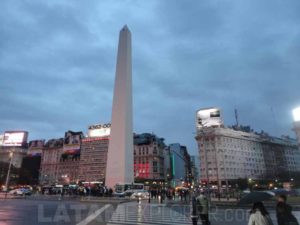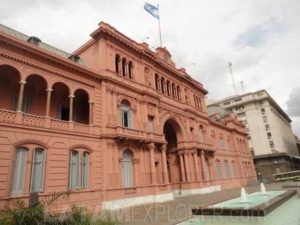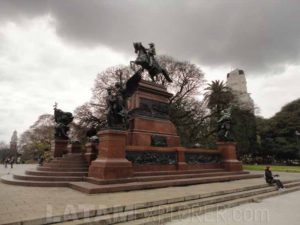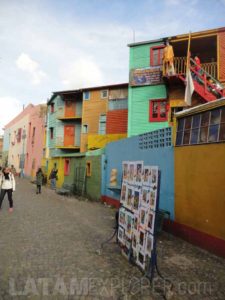Home > Destinations > Argentina > Buenos Aires
Buenos Aires, Argentina
The city of Buenos Aires is the capital and largest city of Argentina. With approximately 3 million people, it is also the core of the third largest metropolitan area in Latin America, with nearly 14 million inhabitants, second only to Mexico City and São Paulo.
The Argentine capital is served by two major airports. Near the city center, Aeroparque Jorge Newbery operates mainly domestic flights, but also some flights to neighboring countries such as Uruguay, Brazil, Chile and Paraguay. Ezeiza Airport, in turn, is used chiefly for international long-haul connections, and lies about 30km (19mi) south of downtown. Buenos Aires can also be visited by ferry, from Uruguay, across the River Plate, on a journey lasting about 1h15 from Colonia del Sacramento or about 2h15 from Montevideo. By road it lies 300km (185mi) away from Rosario, 700km (435mi) from Córdoba, 1,050km (650mi) from Mendoza and 1,270km (790mi) away from Puerto Iguazú. Regular buses connect it to Asunción (1,250km / 775mi), Porto Alegre (1,300km / 805mi), and Santiago (1,400km / 870mi).
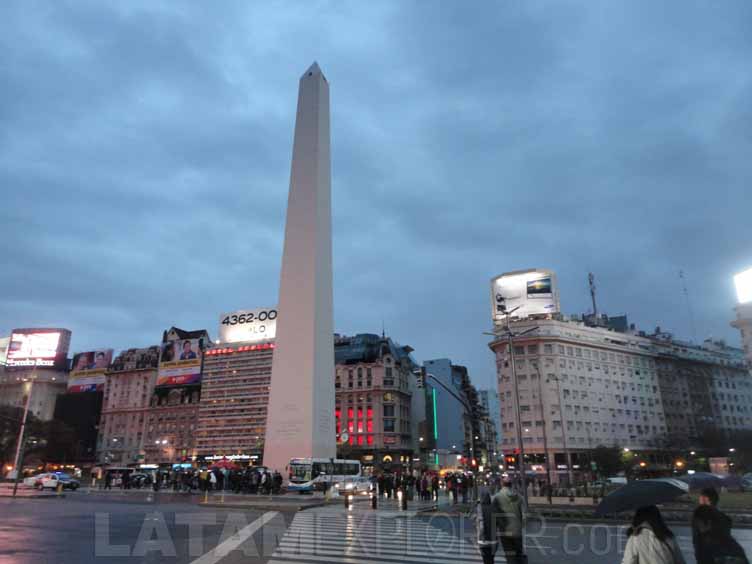
The place where the city stands today was first visited by Europeans during a Portuguese incursion in 1516. It was the Spaniard Pedro de Mendoza, however, who first tried, unsuccessfully, to settle it. Colonization only succeeded after 1580, when Juan de Garay refounded the town during an expedition originated in Asunción, in present day Paraguay. Growth was slow until the Spanish crown decided to found the Viceroyalty of the Río de la Plata in 1776, turning Buenos Aires into its capital. Following the independence movement, Buenos Aires became the federal capital, and thanks in part to the massive European immigration, it was already the largest city in Latin America at the turn of the twentieth century, with about 800,000 inhabitants. Currently, Buenos Aires is a sprawling city offering a great diversity of attractions, plus a variety of cultural, gastronomic and entertainment offers, hosting a large number of tourists from around the world.
The city center, crossed by the unmistakable Avenida 9 de Julio (with its 22 traffic lanes) spreads around the Obelisk, a symbol of the city rising 67 meters (220ft) above the ground, among a multitude of public buildings, theaters, cafes, bookstores and commercial buildings. It is the ideal place to initiate the capital’s exploration. Located two blocks north of the Obelisk, the Colón Theatre is the country's main stage. Heading five blocks southeast from the Obelisk you will arrive at the Plaza de Mayo, where the Cabildo, the former seat of government during the colonial period, the Cathedral, built in neoclassical style, and the most famous building in the country, the Casa Rosada, seat of the executive branch of the Argentine Government, are located. While all of these sites are open to visitors, the Casa Rosada welcomes tourists only on weekends. Located nearby, Avenida de Mayo allows for a beautiful walk, while the pedestrian only Florida Street is a commercial icon of the city. A few blocks east of downtown you can cross one of the bridges into Puerto Madero, the newest neighborhood in Buenos Aires. This area has been experiencing a boom since the turn of the century and is now home to many restaurants and clubs that have become popular among the elite, besides important real estate developments overlooking the River Plate.
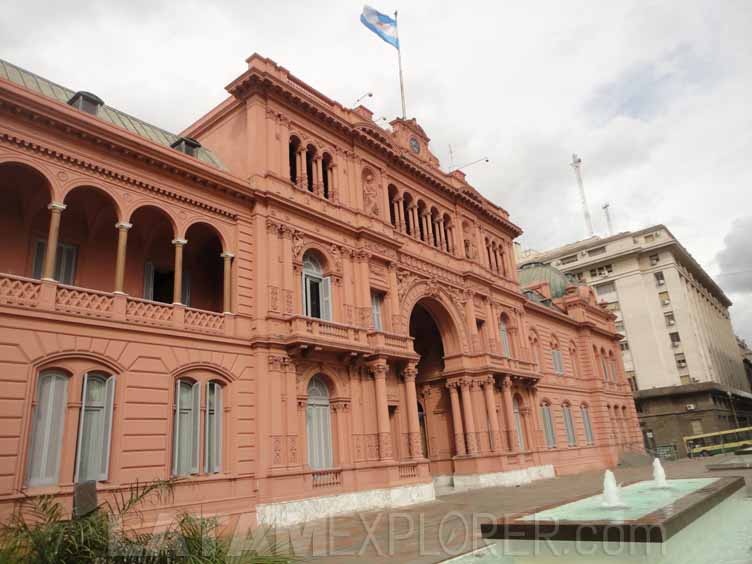
The northern part of Buenos Aires comprises some of the most affluent districts of the city, such as Belgrano, Palermo, Recoleta and Retiro. The Plaza San Martín in Retiro, although relatively small, is one of the most attractive open spaces throughout the city, being surrounded by several elegant buildings like the San Martín Palace and the Retiro Palace, besides the Basilica del Santísimo Sacramento. Neighboring Recoleta, best known for its beautiful cemetery, resting place of some of the most important historical figures of the country, such as Evita, is characterized by its many buildings of French inspiration, large green spaces and nice cafes and restaurants. Recoleta is also home to the National Museum of Fine Arts and to the National Library. Palermo is largely a residential neighborhood, characterized by beautiful streets and boulevards. Due to its large size, the neighborhood is subdivided for practical purposes in smaller districts like Alto Palermo, Palermo Viejo, Palermo Soho and Palermo Hollywood, among others. The main attractions of this area are the Latin American Art Museum of Buenos Aires (MALBA), possibly the best art museum in the city, the Botanical Garden and the Zoo.
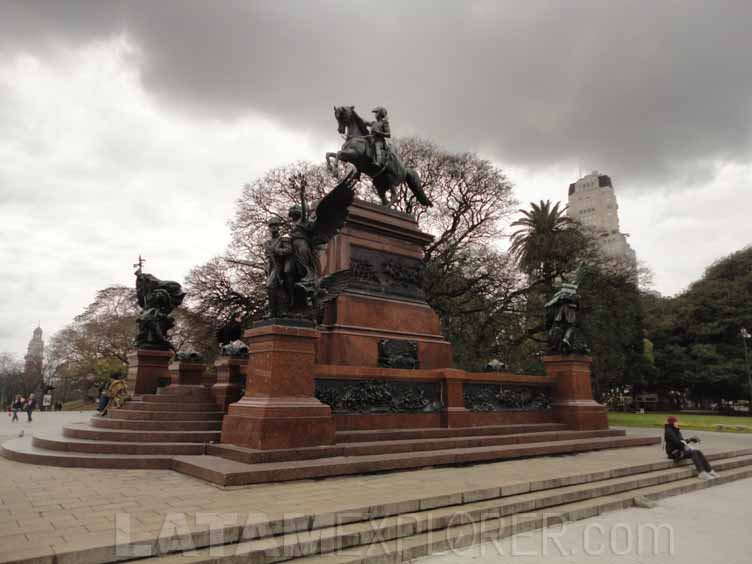
The region south of the Plaza de Mayo is considered to be the southern sector of the Argentine capital. This is an older area and, according to some, more unique to the city. The district of Montserrat, closest to the center, has several historic buildings and some small museums such as the Museum of the City. Immediately south of Montserrat, San Telmo is one of the most characteristic neighborhoods of Buenos Aires. Having Defensa Street as its main artery, San Telmo is very popular for its flea markets, held every Sunday, and its narrow cobblestone streets, where you can feel something of the history of Buenos Aires. Finally, La Boca is, for many, the main attraction of the city. This neighborhood features La Bombonera, where the most popular soccer team in town, Boca Juniors, plays at home; it was built in 1940. The Caminito, a kind of open air museum occupied by several small souvenir shops and street artists who try to draw the attention of passers-by, is also found in the vicinities.
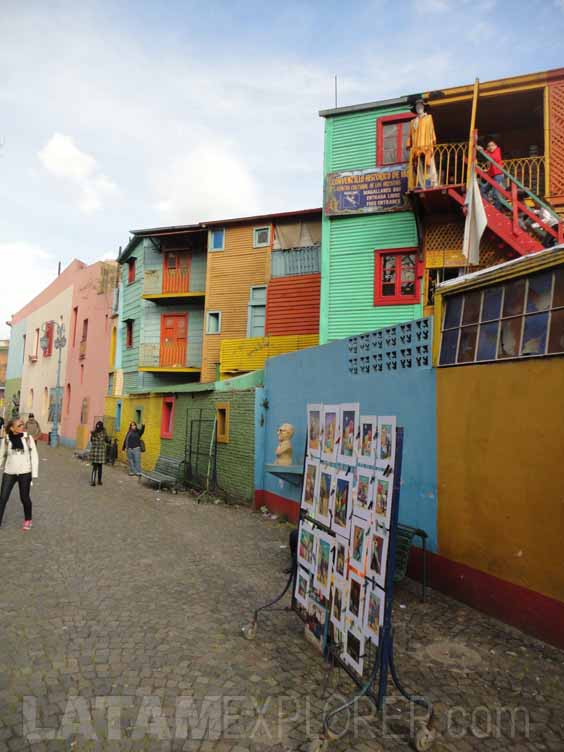
Buenos Aires is one of those cities that have the power to captivate visitors and even after weeks keep surprising them. For most mortals with limited holiday availability, however, three days to good use should be sufficient to get an idea of what the Argentine capital is all about. After this period of "acclimatization", a good idea would be to continue discovering this country, heading towards the Patagonia, the wine region of the Cuyo, the Iguazu Falls, or the second largest city in the nation.
